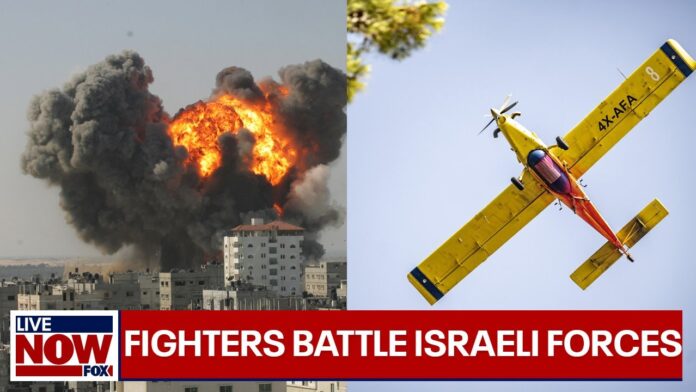A soldier loses his life in Gaza clashes, while the IDF scrutinizes an airstrike following claims of civilian casualties in Khan Yunis
On the 278th day of ongoing hostilities between Israel and Hamas, tensions escalated with significant developments on multiple fronts. In Gaza, Sergeant First Class (res.) Tal Lahat, aged 21 and hailing from Kfar Sava, was tragically killed during combat operations in the central Gaza Strip. Lahat, a member of the elite Maglan commando unit, succumbed to injuries sustained in the intense fighting, highlighting the perilous conditions faced by Israeli forces on the ground.
Meanwhile, controversy swirled around an Israeli airstrike near Khan Yunis in southern Gaza, where Palestinian sources reported at least 29 casualties, primarily women and children. The strike, purportedly targeting a Hamas militant linked to past attacks, has prompted an investigation by the Israeli Defense Forces (IDF) amid mounting international concern over civilian casualties. The IDF has stated the operation aimed to neutralize a Hamas operative responsible for deadly assaults on Israeli civilians, underscoring the complexities and human toll of asymmetrical warfare in densely populated areas.
Amid these developments, tensions also flared along Israel’s northern border. Hezbollah targets in southern Lebanon came under attack from Israeli fighter jets following a rocket barrage from Lebanese territory into the Golan Heights, which claimed the lives of two Israeli civilians. The IDF’s retaliatory strikes targeted Hezbollah air defence systems and military positions, signaling a broader regional escalation amidst ongoing hostilities.
Analysis:
Political Perspective: Politically, the intensification of military actions underscores the persistent challenges for Israeli leadership in balancing security imperatives with international scrutiny over civilian casualties. The IDF’s operations in Gaza and Lebanon are strategically aimed at mitigating threats posed by Hamas and Hezbollah but also invite scrutiny over compliance with international humanitarian law and the proportionality of military responses. Domestically, the government’s handling of the conflict influences public support and perceptions of national security, shaping electoral dynamics and diplomatic engagements.
Social Perspective: Socially, the conflict perpetuates humanitarian crises and amplifies societal divisions within Israel and the Palestinian territories. Civilian casualties, particularly among women and children, provoke international condemnation and fuel debates on the ethics of military tactics in urban warfare. The impact on civilian infrastructure and displacement exacerbates humanitarian needs, galvanizing global calls for ceasefires and humanitarian aid while testing regional alliances and diplomatic efforts towards peace negotiations.
Racial Perspective: From a racial standpoint, the conflict resonates with historical and contemporary narratives of identity and belonging in the Israeli-Palestinian context. While racial dynamics are intertwined with political and cultural identities, the immediate focus remains on the humanitarian toll and international responses to ensure equitable treatment and protection of all affected communities amidst escalating violence and geopolitical manoeuvres.
Gender Perspective: Gender dynamics within the conflict highlight differential impacts on women, children, and families, exacerbated by displacement and disruptions to daily life. Women often bear disproportionate burdens as caregivers and victims of conflict-related violence, necessitating gender-sensitive humanitarian responses and advocacy for women’s rights amidst the turmoil of displacement and loss.
Economic Perspective: Economically, the conflict disrupts regional stability and economic prospects, impacting sectors reliant on peace and stability. Escalating military expenditures and humanitarian aid needs strain national budgets and international resources, affecting long-term development and regional cooperation. The conflict’s ripple effects on trade, tourism, and investment underscore the interconnectedness of security and economic resilience in conflict-prone regions.
